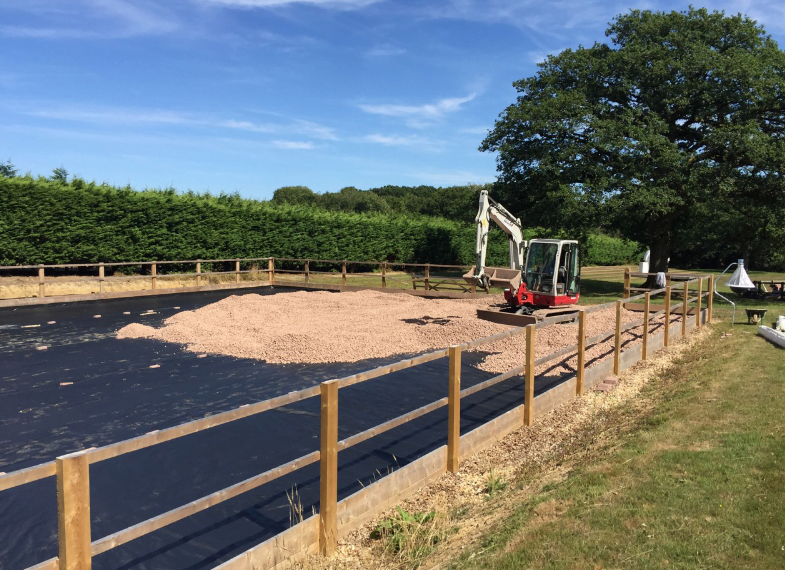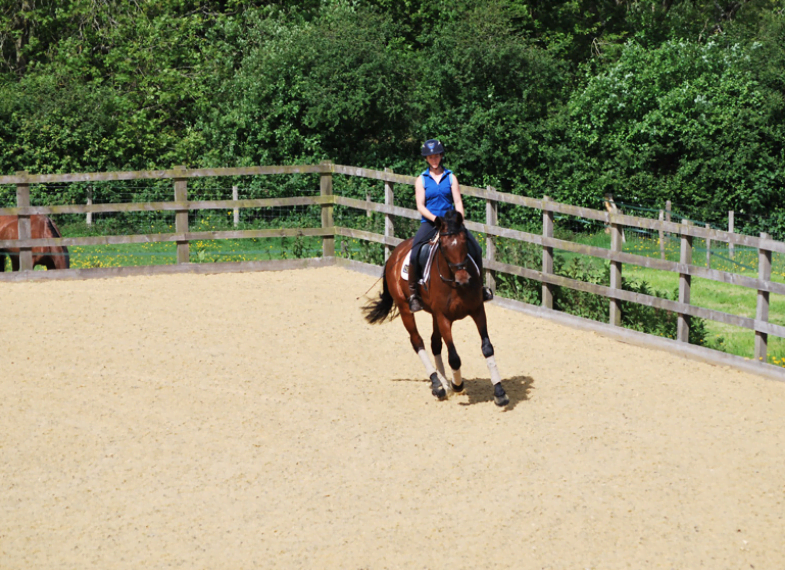Five Things to Consider before Building a Riding Arena
If you’re thinking about constructing a riding arena, we’ve outlined five things you should consider before building.
1. Location
Before building your riding arena, it’s essential to consider the whole layout of your site. You don’t want to compromise on size or location due to it not fitting in your chosen area.
Determine whether there are any hedgerows or trees close to the arena. Fallen leaves can contaminate your surface if not removed, and growing roots can affect foundations.
While shade is a welcomed bonus during the summer, it’s important to remember that these areas will take longer to thaw during heavy frosts.
You can build your arena on almost any type of ground, but it’s best to avoid rocky and boggy areas. Building in these areas generally requires more time and financial investment to make them suitable, so it’s sometimes easier to choose a different location.

2. Size
When deciding on the size of your riding arena, bigger isn’t always better. It’s essential to consider your requirements carefully, including factors like restrictions imposed by your chosen location or the type and level of maintenance it will require.
The most popular arena size is a 20m x 40m, but keen dressage riders might prefer a 20m x 60m. Generally, jumping requires extra width, so a 30m x 40m or 30m x 50m may be more suitable.
3. Drainage
The base of your equestrian arena is the most crucial aspect of your build. If not constructed correctly, you will likely experience drainage issues that can affect your surface’s performance. On the other hand, you should only ever have to replace the footing and fencing if built well.
We’ve created a handy five-part guide that provides step-by-step instructions on building a riding area. You can view it on our guides page by following the link provided.
View guide

4. Surfaces
Selecting the right surface for you and your horse can be challenging, especially with many options currently on the market. Each footing will have positives and negatives, so it’s best to decide what characteristics are most important to you. Things you should consider are:
Price
Always buy the best surface you can within your budget. If you have to remove and replace a cheaper footing that doesn’t work, you’ll pay more in the long run!
Size
If your budget is limited, you may have to compromise on the size of your arena to afford that glorious waxed surface you’ve always wanted or vice versa!
Type
Most surfaces are suitable for outdoor use, but ideally, you should use a waxed footing for an indoor school. Wax provides increased levels of support and stability in dry conditions.
Use
Busy yards and equestrian centres may benefit from a wax footing, as they require less maintenance and provide good durability. While small or private yards might prefer a non-waxed surface or sand and rubber.

Need help to decide?
Our experienced team can discuss your requirements with you and recommend a suitable surface. You can call us on our freephone number 0800 044 8101 or complete our contact form, and a member of the team will be in touch.
5. Planning
Most arena installers can complete this process for you. However, if you decide to do this yourself, please note that planning permission can take months.
One of the most common reasons for rejection is lighting; if illumination affects nearby neighbours or roads, you may have your planning permission denied. Planning authorities may also place restrictions on the colour or kind of surface you can use, especially in Areas Of Outstanding National Beauty.

